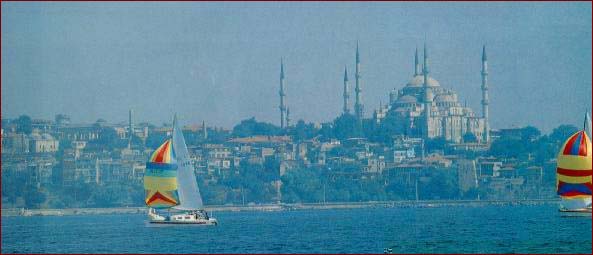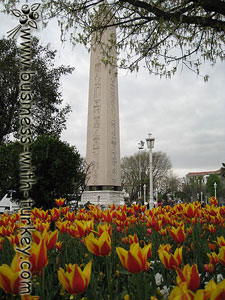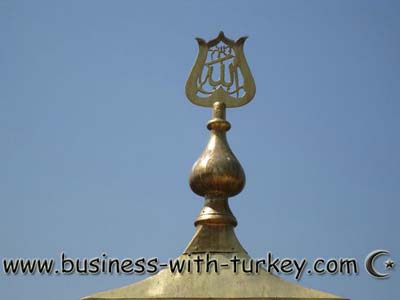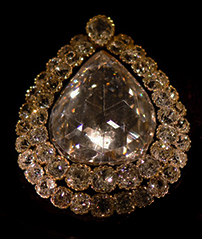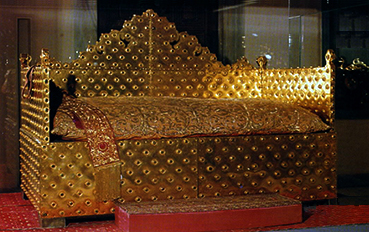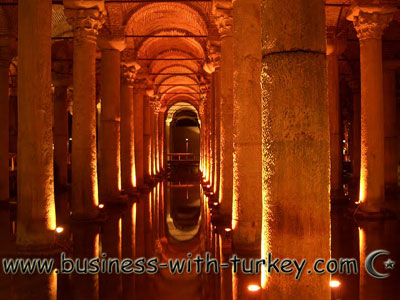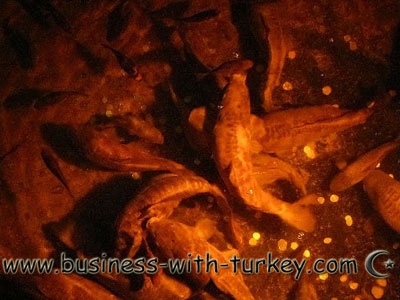Turkish food is renowned as one of the top three world cuisines. Because of its geographical position and cultural heritage, Turkish cuisine has been influential in and influenced by Europe, Asia, the Middle East and Africa. The Turkish cooking tradition has a unique historical heritage and makes use of an incredibly rich variety of natural ingredients; this has all led to a unique fusion of East and West.
As in Italy, Spain and Portugal, dining is an integral and indispensable part of social life. In addition to traditional Turkish cuisine, in all its regional varieties, other types of food are widely available. Seasonal vegetables and fruits, including eggplants, peaches, figs, olives, dried apricots, as well as all kinds of nuts, are very popular. Freshly baked bread is the favorite accompaniment for dishes, and lamb and chicken are the main meats. The consumption of pork is forbidden by Islam and hence not common. Although the Koran also forbids alcoholic beverages, many Turkish people drink beer, wine and liquors.
All cities have numerous restaurants and snack bars. Many specialize in a limited number of foods, such as kebabs, soups, meat wraps, pastries, fish and so on. Others offer a variety of meals, including stews, pilafs (seasoned rice), vegetables, and deserts. International fast-food chains have recently become popular in major metropolitan areas.
Both coffee and tea play an indispensable role in Turkey’s social life. Tea and coffee houses are “disguised” social and cultural meeting points, where news and gossip is exchanged. In recent times, Turkish coffeehouses have started to serve the traditional water pipes with many different aromas and flavors. As a result of the rediscovery of this nostalgic pleasure, coffeehouses are once again experiencing a boom in popularity.
Oğuzhan Apak
The Lord Of İstanbul Travel Planner
www.thelordofistanbultravelplanner.com
thelordofistanbultravelplanner
thelordofistanbultravelplanner
Mobile:0090 533 641 32 42




.jpg)
